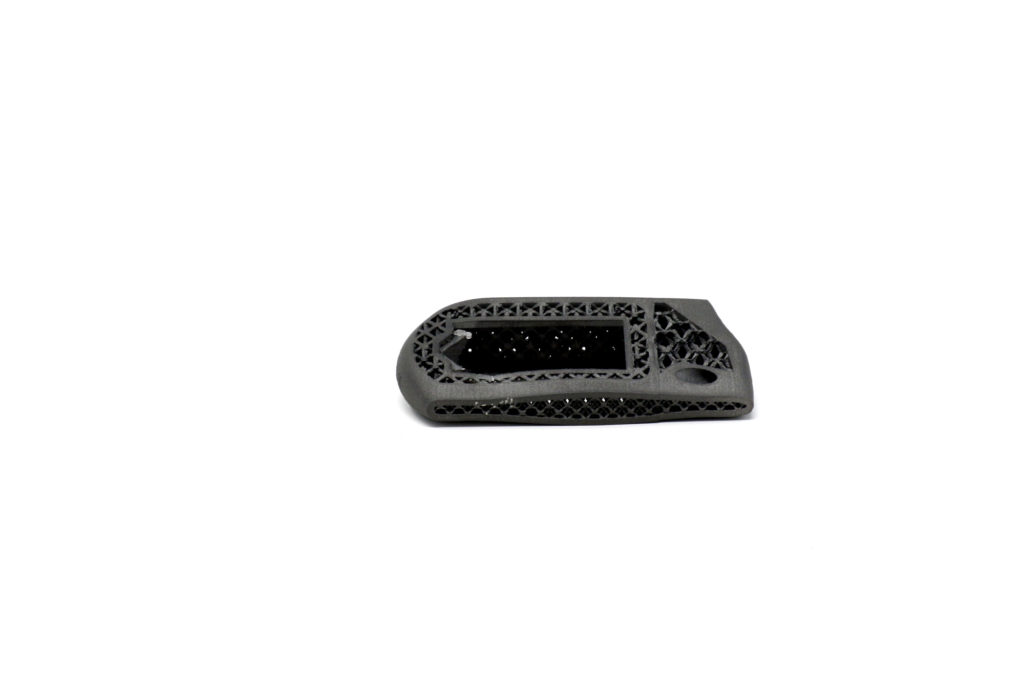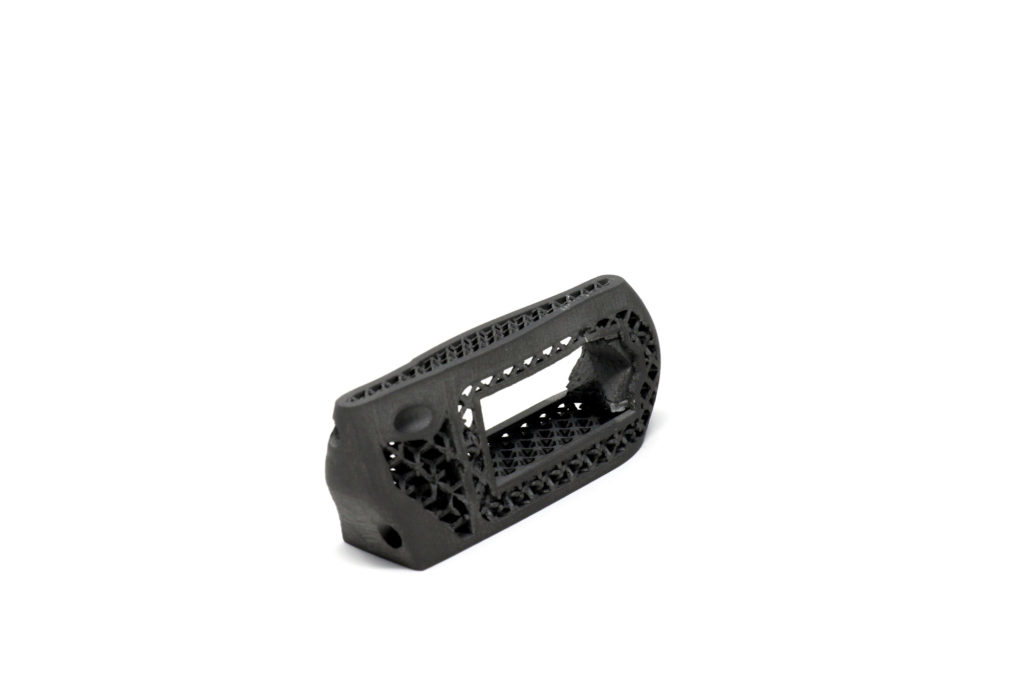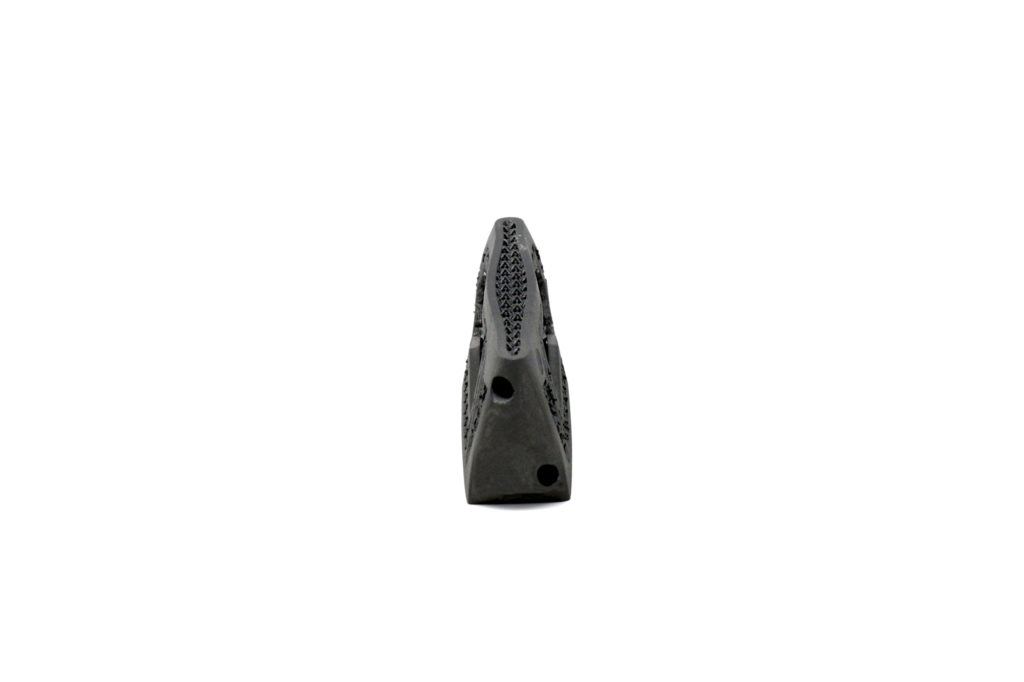
Digital technologies are gaining ground in driving the transition to value-based healthcare, which rewards healthcare providers based on the quality, not quantity, of patient care. This is especially evident in orthopedics, where additive manufacturing innovations have led to major improvements in care efficiency and effectiveness.

The development of 3D-printed metal implants, using titanium, cobalt-chrome and stainless steel, is a prime example of how additive manufacturing has empowered surgeons to elevate patient outcomes. Leveraging additive manufacturing using the same materials and mechanical properties for traditional implants can create new, complex geometries and implants with pores into which connective tissue and bone can migrate. This concept, known as osseointegration, accelerates post-operative healing while enabling bone and implants to fuse better.
Not only does this improve implant fit, it simplifies surgeries, which traditionally required an extra step to apply special cement that connects the bone and implant. While this step is still part of conventional implants, it typically leads to longer surgeries, recoveries and higher incidence of implant failure when compared to 3D-printed implants.
The continued success of additive manufacturing has been reinforced by impressive performance increases at an order of magnitude higher than conventional procedures. The opportunity to also leverage 3D printing to produce a range of surgical instruments has created a groundswell for metal additive manufacturing.
Capacity Demands Intensify
According to industry sources, an increasingly significant of global implants will be produced using additive manufacturing in the very near future. At the annual Additive Manufacturing Strategies Conference in Boston on February 11-12, SmarTech Analysis’ latest study on additive manufacturing technologies in the orthopedic implant industry will be shared. Most notably, SmarTech projects this market to grow at 27 percent annually, which creates opportunities for incumbents and start-ups.
An important factor driving demand is the “graying” of the global population. People are living longer, and staying active later in life, so older adults increasingly are requesting implant surgeries. Another factor: The ease with which startups can take advantage of additive manufacturing to speed time-to-market with solutions that disrupt incumbent market share.
As competition heats up and barriers to market entry drop, conventional implant makers will be forced to cannibalize existing product lines to bring new 3D-printed versions to market faster. This need for speed is creating new market dynamics with a sense of urgency to scale rapidly.

Scaling capacity, however, is capital intensive, in terms of deploying metal 3D printers, post-processing processes as well as quality procedures capable of meeting strict medical regulations. While some organizations are trying to grow capacity internally, others are finding a faster route by partnering with manufacturing services providers with experience in regulated industries.
One of the biggest impediments to rapid scaling can be removed by partnering with a company that has expertise inhouse to apply the rigors of manufacturing to ensure repeatable process quality. Another barrier is having ample experience in integrating additive manufacturing materials, processes and machines to match specific part performance with application requirements. The ability to clear these hurdles is key to reducing time-to-market, cost and risk while producing the highest quality parts.
A Marathon Mindset
Adding 3D printing into the manufacturing mix isn’t a sprint, but the culmination of long-term planning, forecasting and plotting a path to personalization. It takes a marathon mindset and a “walk before you run” methodology to incorporate additive manufacturing into the healthcare landscape.
In addition to orthopedic implants, surgical instruments provide another viable entry point. They represent a low-volume, high-mix business, which is ideally suited for additive manufacturing. It’s highly common for two to three tables of surgical tools to be used during one implant procedure, so the business case to produce them using additive manufacturing is compelling. There’s typically high costs associated with producing these instruments, so implant OEMs often outsource the process.

Producing these instruments using additive manufacturing offers myriad benefits, not the least of which is tailoring “fit and feel” for a surgeon’s hands. Additionally, instrument designers have greater freedom to create a perfect match with a particular implant.
Ready, Set, Print
Ultimately, additive manufacturing will propel the entire industry toward more personalized healthcare with the ability to customize individual products while making it economically feasible to produce a single unit. That’s likely a phase two reality, following orthopedics spreading to other parts of medical manufacturing to transform the industry and take patient care to the next level.
It won’t happen overnight, but the race is on. It will be interesting to see which companies pull ahead of the pack to lead the way.
Geoffrey Doyle is Director of Business Development for Jabil Additive
Subscribe to Our Email Newsletter
Stay up-to-date on all the latest news from the 3D printing industry and receive information and offers from third party vendors.
You May Also Like
3D Printing Unpeeled: New Arkema Material for HP, Saddle and Macro MEMS
A new Arkema material for MJF is said to reduce costs per part by up to 25% and have an 85% reusability ratio. HP 3D HR PA 12 S has been...
3D Printing News Briefs, January 20, 2024: FDM, LPBF, Underwater 3D Printer, Racing, & More
We’re starting off with a process certification in today’s 3D Printing News Briefs, and then moving on to research about solute trapping, laser powder bed fusion, and then moving on...
3D Printing Webinar and Event Roundup: December 3, 2023
We’ve got plenty of events and webinars coming up for you this week! Quickparts is having a Manufacturing Roadshow, America Makes is holding a Member Town Hall, Stratafest makes two...
Formnext 2023 Day Three: Slam Dunk
I’m high—high on trade show. I’ve met numerous new faces and reconnected with old friends, creating an absolutely wonderful atmosphere. The excitement is palpable over several emerging developments. The high...































